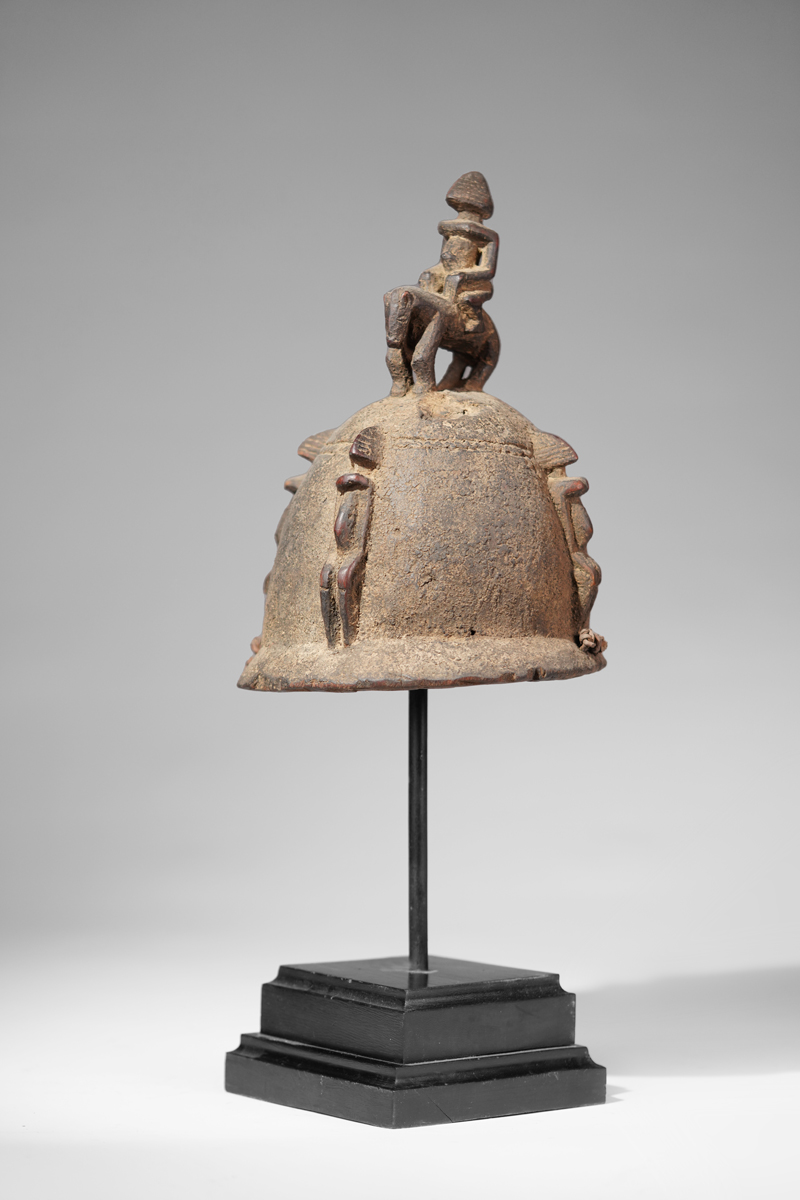 |
 A Dogon helmet sculpture, Mali, decorated with four female figures and surmounted with a horseman, heavy encrusted sacrification patina, traces of ritual use and age.
"Paradoxically, the art of [the Dogon people...] is closer in spirit to modern sculpture than almost anything else in Africa. The plasticity of the greatest Dogon carvings must be compared – in quality as well as nature – with that of Brancusi or (the Cubist) Lipchitz. I say 'paradoxically' because (except for possible rare stray pieces) Dogon sculpture was unknown to that pioneer generation of twentieth century modernists (except in some cases at the end of their careers). One cannot but imagine how the Brancusi or Lipchitz (or, for that matter, the Picasso or Matisse) of 1915 would have savored the great Dogon pieces we know today. How much more than most of the African material then at hand these sculptures would have confirmed those modernists in the daring solutions they were undertaking."
According to Dogon cosmology, the creator god Amma and the female earth united to create the primordial Dogon ancestor, the Nommo. Nommo statuettes were carved by blacksmiths and placed on the altars of each family. The presence of masculine and feminine elements embodies this primordial union.
Lit.: Hélène Leloup, Dogon Statuary, publisher Daniele Amez, 1994; Primitivism In 20 th Century Art, The Museum of Modern Art, publisher William Rubin, 1984.
“Located in the east of Mali and in the northwest of Burkina Faso, the Dogon country extends over nearly a thousand kilometres.
Originally from Mandé, the Dogon would have reached the Bandiagara region in the 14th century. Different groups, resulting from migratory movements, were established before the arrival of the Dogon. Installed in the central region, the Tellem were driven out or assimilated, abandoning in their flight many objects belonging to funerary or religious material ... In this arid region, rain is essential. The Dogon have been able to organize an agricultural system that allows them to live from cereal crops (millet, sorghum, rice) and market gardening (onions, peppers, etc.). Sacrifices were made, especially at the time of planting and harvesting."
Lit: Helen Leloup, Dogon, Musée du quai Branly - Jacques Chirac, Paris 2011.
sold
Height: 30 cm
Width: 23 cm
Weight: 2,1 kg |
 photo: wolfgang-jaenicke.com, for more information, please write us an e-mail with the identification number of the photo identification no. XBD121507.jpg
photo: wolfgang-jaenicke.com, for more information, please write us an e-mail with the identification number of the photo identification no. XBD121507.jpg |
|
